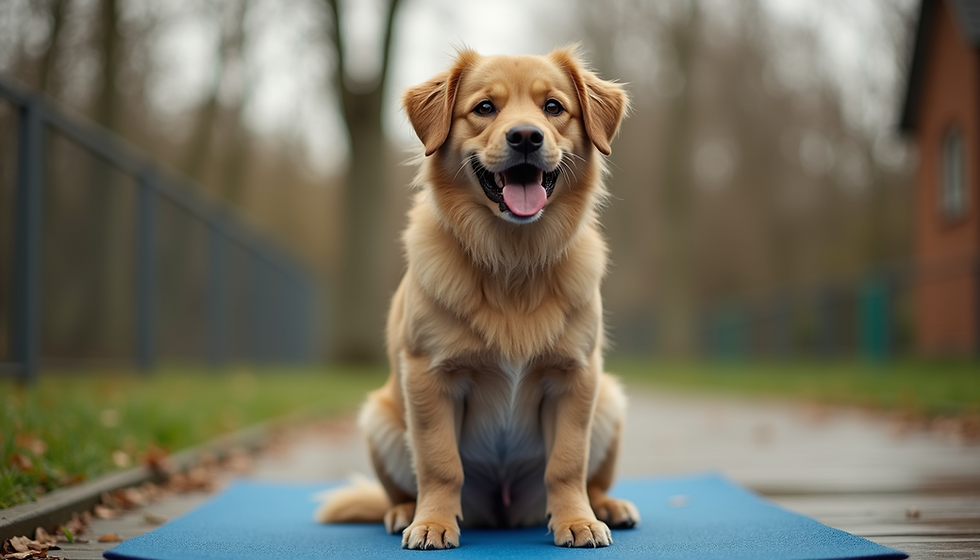Unlocking the Secrets of Positive Reinforcement in Dog Training for Lasting Success
- Jessica Ranieri
- Jun 9
- 3 min read
Positive reinforcement is a powerful tool in dog training that not only fosters good behavior but also strengthens the bond between you and your furry companion. This training approach emphasizes rewarding desired behaviors, creating a joyful learning experience. With positive emotions at its core, this method can transform the way you interact with your dog, leading to a happier and well-adjusted pet.
Understanding Positive Reinforcement
At its core, positive reinforcement means giving a reward immediately after your dog performs a desired behavior. Rewards can vary widely, including treats, verbal praise, toys, or even a fun play session. For example, when teaching your dog to sit, offering a small treat or saying "good job!" right when they obey is essential. This immediate connection helps your dog understand exactly what action earned them that reward.
Traditional training methods often rely heavily on punishment, which can create fear in dogs. In contrast, positive reinforcement creates a safe and fun environment, encouraging dogs to engage willingly in the training process.
The Advantages of Positive Reinforcement
Using positive reinforcement offers multiple benefits that extend far beyond just behavior training:
Stronger Bonding: Dogs feel loved and valued when they associate their good behavior with rewards. This creates a deeper connection. A study from the University of Pennsylvania found that dogs trained with positive reinforcement were more likely to follow commands 75% of the time compared to 25% for those trained with punishment-based methods.
Reduced Anxiety and Improved Behavior: Dogs trained with positive reinforcement are less likely to show behaviors associated with anxiety or fear. They display more confidence and become well-rounded companions. For instance, a dog who is rewarded and praised during training is less likely to shy away from strangers, making outings more enjoyable.
Practical Techniques for Positive Reinforcement
Here are some practical tips to implement positive reinforcement effectively:
Timely Rewards: Always reward your dog immediately after the desired behavior. For example, if your dog comes when called, give them a treat right as they arrive. This prompt response helps solidify the connection in their mind.
Start with Simple Commands: Begin training with basic commands like "sit," "stay," or "come." For example, after teaching "sit," practice in short sessions until your dog reliably responds. This foundational training sets the stage for more complex behaviors later.
High-Value Rewards: Dogs have preferences! Use treats that excite them—maybe a slice of boiled chicken or their favorite toy. The better the reward, the more likely they are to repeat the behavior.
Consistency is Essential: Every time your dog successfully completes a desired action, reward them. If they sit when asked, offer praise and a treat. After some time, you can start to reduce the frequency of rewards, reinforcing the behavior without needing a constant treat.
Keep It Fun and Short: Dogs generally have shorter attention spans, so limit training sessions to 5-10 minutes. For instance, train your dog for a few minutes, then let them play fetch as a reward. This keeps the experience positive and engaging.
Navigating Training Challenges
Training may sometimes pose challenges. If your dog isn't responding as expected, stay patient and consider alternative approaches:
Adjust the Training Method: If a particular behavior is not sticking, try changing it up. For instance, if your dog isn’t responding to "sit," switch to "down" for a session, then revisit "sit" later.
Experiment with Rewards: If your dog seems uninterested, try different treats or rewards. A thorough study on canine motivation showed that dogs are more engaged when trained with high-value rewards.
Seek Professional Guidance: If you find difficulties persist, consulting a professional dog trainer who emphasizes positive reinforcement can provide valuable insights and support.
Embrace Positive Reinforcement
Positive reinforcement is more than just a training method; it's a key to building a loving, trusting relationship with your dog. By focusing on rewards rather than punishment, you create a joyful training experience that nurtures good behavior and enhances your pet's overall happiness.
By embracing these principles of positive reinforcement, you're not just training a dog; you're fostering a lifelong partner and friend. Start rewarding those good behaviors, and watch your dog's growth and confidence flourish!




Comments